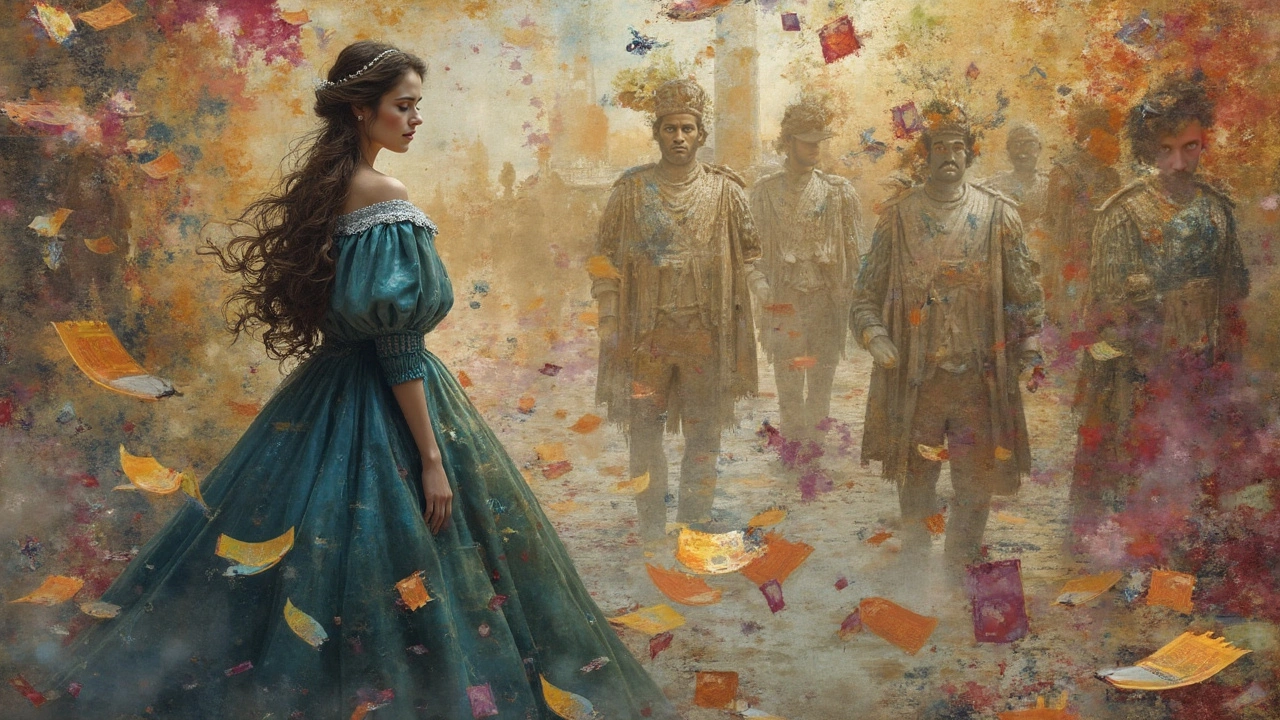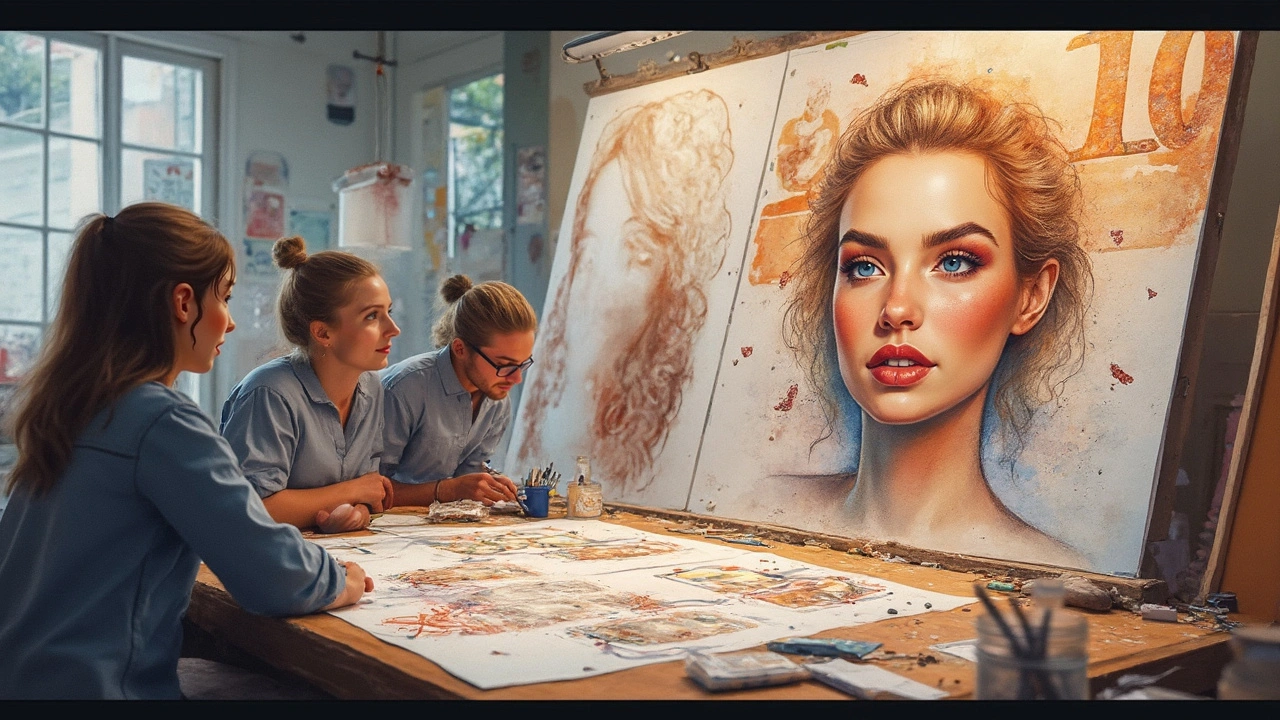
So, who is the woman you see whenever you pay with a 10 euro note? Oddly enough, she's not a real person, unlike George Washington on the US dollar. She's a fictional representation, created to symbolize architectural and cultural heritage across Europe. Intriguing, huh?
Now, why isn't she a famous historical figure? Well, the eurozone wanted a design that transcends any one country's history or culture. This lady on the note is meant to represent all European women and their rich, shared heritage. It’s a way to make the currency neutral yet meaningful.
The note's design incorporates a blend of Gothic, Romanesque, and Baroque architectural styles, making it a small piece of art. Quite the interesting little detail! Designers wanted each note to represent a different time period creatively. This not only showcases Europe's past but also unites the member countries under common values.
- The 10 Euro Note Design
- Imaginary Icon: Not a Real Woman
- Symbolism and Values
- Art and History on Money
- Changing Faces of Currency
The 10 Euro Note Design
The design of the 10 euro note is pretty fascinating when you break it down. From afar, it might just look like another piece of cash, but take a closer look, and there's a lot more detail than you'd initially think!
Design Choices
The architects of the euro wanted each banknote to have its own vibe, each telling its own story. The 10 euro note features Gothic architecture, showcasing pointed arches and intricate windows. The idea was to show off the richness of European architectural heritage—neat, right?
Cool Details
On the front, aside from the fictional woman symbolizing cultural heritage, you'll spot a bridge. It might look familiar, but here’s the catch: it’s an imaginary bridge! The thought behind it? To symbolize communication across Europe, no real-world politics involved. Pretty clever.
| Feature | Detail |
|---|---|
| Primary Style | Gothic |
| Main Color | Red |
| Dimensions | 127 x 67 mm |
| Pepper Shiny Effect | Enhanced in 2022 |
In terms of color, a warm red dominates, making sure it stands out in your wallet next to the others. And don't forget about security features like watermarks and holograms, which have been amped up over the years. The balance between style and security is no easy task, but they nailed it.
So, the next time you hand over a 10 euro note, remember it's more than just a piece of paper—it's a little masterpiece blending art, culture, and history.
Imaginary Icon: Not a Real Woman
It's easy to assume that the woman staring back at you on the 10 euro note is someone from the pages of history. Surprising twist? She's totally made up! The woman on the euro note isn't based on any real-life figure. Instead, she's an artist's vision of an idealized European woman, meant to symbolize unity and shared heritage.
Why go fictional, you ask? The idea was to avoid upsetting anyone, which could happen if a specific country's icon was chosen. Imagine the arguments over who deserves the honor! By giving us an imaginary face, the currency design avoided the politics, creating a neutral and inclusive icon for all members of the eurozone.
The design process was pretty intense. The European Central Bank held a competition way back in the '90s. Designers from all over Europe submitted their takes, aiming to capture the essence of the continent. The focus was on different styles of arches and windows repping various architectural periods. You won't find any recognizable landmarks, just generic shapes and forms that suggest a lot without saying one specific thing.
So, the next time you use a euro note, remember you're holding a piece of art crafted to reflect the mosaic that is Europe. It's like a little lesson in diplomacy and design wrapped up in your wallet!

Symbolism and Values
Who knew a simple piece of paper could carry such deep meanings? The design of the 10 euro note isn't just about looking pretty. It's crammed with symbolism that reflects the shared values and history of the eurozone countries. The choice of styles - think Gothic arches or Baroque curves - wasn't random. It’s a nod to Europe’s diverse and brilliant past, showing how strong and united the continent can be despite the different cultures.
The note acts as a canvas for the eurozone's philosophy. There’s a bridge on the back, which isn’t just any bridge, but an imaginary one. This bridge symbolizes cooperation and open communication across borders. It's a nice concept, right? Connecting people, economies, and ideas in a single sweep.
Inclusivity and Neutrality
The euro notes refrain from choosing specific individuals or landmarks that could favor one nation over another. By having an imaginary woman, the note keeps things inclusive and avoids any national bias. It’s a smart move that encourages unity.
In these notes, you won’t find any political icons or historical figures that might belong to only one country. Instead, there's art and architecture, representing a time when Europe thrived in different domains. It's a celebration of what brings all member countries together rather than what sets them apart.
The Artistic Values
A fun fact: the euro notes were designed by Robert Kalina, an Austrian artist. He won a competition back in the '90s when the euro zone countries wanted to create a common currency. What’s impressive is how these notes managed to stay practical while remaining visually appealing.
With clean designs and meaningful illustrations, the euro notes are not just tools for buying things. They're filled with layers of meaning and artistry. Every time you pull one out of your wallet, you hold the entire eurozone story in your hands!
Art and History on Money
When you look at a euro note, you're not just holding currency. You're holding a mini museum of Art and History in your hands. The designs on the euro banknotes reflect the rich tapestry of European heritage.
Each denomination of the euro note features a different architectural style, like bits of history preserved through art. The 10 euro note, for instance, showcases the beautiful elements of Romanesque architecture. It's like getting a history lesson every time you reach for your wallet!
What's cool is that the eurozone chose to represent architectural styles instead of national monuments or leaders. This decision was made to avoid highlighting one country's history over another. It's all about unity in diversity, and it just goes to show how the euro note design is more than meets the eye.
"Money is not just a medium of exchange; it's a canvas for art and history." - European Central Bank
Designers at the European Central Bank had a tall order: create notes that resonate with over 340 million people without favoring a single nation. No pressure, right? But they pulled it off, showcasing the euro as a symbol of cooperation and shared history.
Beyond aesthetics, think about who crafted these images. Robert Kalina, an Austrian designer, was the mastermind who brought us these iconic notes. The detail and symbolism interwoven into each bill make them more than just paper - they’re stories waiting to be told.
Innovative Security Features
The euro notes are not just pretty; they're secure. They come with advanced security features like holograms, watermarks, and security threads, making counterfeiting tough. Next time, take a moment to admire the fine details that also keep your money safe!

Changing Faces of Currency
Currencies have a fascinating history of transformation. If we look back, notes have changed many times not just to deter counterfeiters but also to reflect the era's spirit. The euro, being relatively new, follows this rich tradition.
When the euro was first introduced in 2002, the designs were created to embrace a united Europe, and these designs were inspired by various architectural ages. However, as time progresses, so does the need for change. The European Central Bank (ECB) has talked about redesigning notes to better connect with its people and strengthen that European identity.
Currency design isn't just about putting pretty pictures on paper. It's about security features too. What's included? Well, think holograms, watermarks, and color-changing ink. These elements protect our money from counterfeit efforts and they get better with each iteration.
Changes in currency often reflect broader cultural and political shifts. For instance, the ECB in recent years has considered adding faces of influential European figures. This would bring a more personal touch and celebrate Europe's diversity and achievements.
In 2019, a survey showed that 70% of eurozone citizens felt a closer tie to their money when they could recognize faces or symbols. This shows that people want a more personal connection with the currency in their pockets. Who doesn’t want something familiar to hold when handling money?
So, why not keep an eye on what gets printed next? Whether it's familiar architecture or the face of someone impactful, it'll surely have a story to tell.
Post A Comment